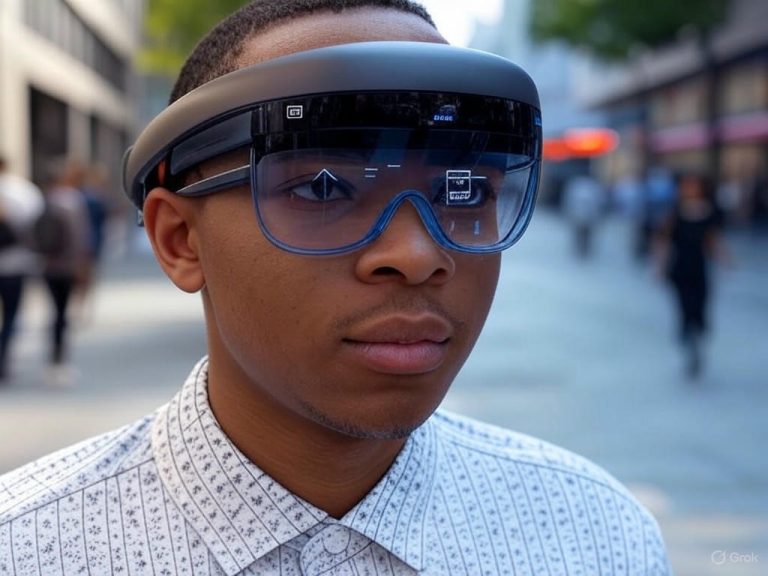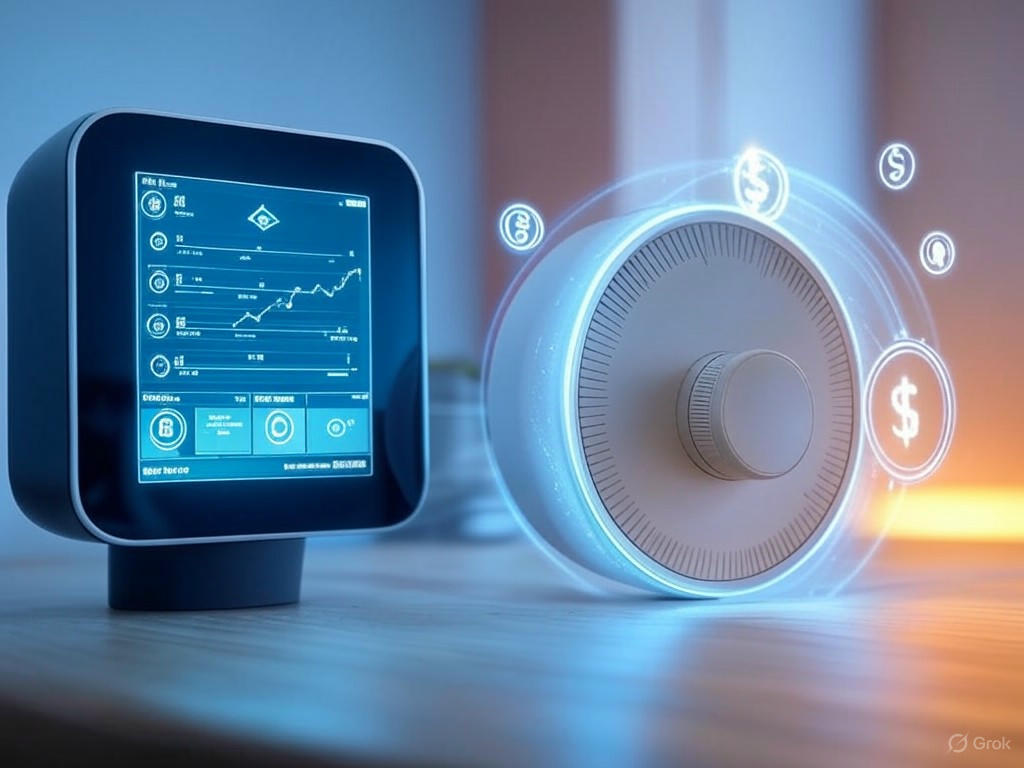
Smart vs Traditional Thermostats: Real Energy Savings Tested
- Introduction: Defining the Energy Efficiency Debate Between Smart and Traditional Thermostats
- Introduction: Defining the Energy Efficiency Debate Between Smart and Traditional Thermostats
- Why Thermostat Choice Matters for Energy Use and Comfort
- Defining Smart vs. Traditional Thermostats: Core Features
- Analytical Framework: What This Article Covers
- Technical Specifications and Innovations in Smart and Traditional Thermostats
- Technical Specifications and Innovations in Smart and Traditional Thermostats
- Hardware Components: Sensors, Connectivity, Displays, and HVAC Compatibility
- Software Features: Learning Algorithms, Geofencing, Remote Control, and Data Reporting
- Performance Metrics: HVAC Cycle Frequency, Temperature Adjustment Granularity, and Thermostat Power Consumption
- Summary
- Performance Metrics: Energy Savings and Efficiency Benchmarks
- Performance Metrics: Energy Savings and Efficiency Benchmarks
- Quantifiable Energy Savings and Carbon Reduction
- Runtime Hours and System Operation Insights
- Impact of Home Types and HVAC System Age on Savings
- Third-Party Certifications and Real-World Validation
- Summary: What to Expect in Real Life
- User Experience and Practical Implications in Daily Use
- User Experience and Practical Implications in Daily Use
- Installation, Interface, and Learning Curve
- Automation Impact on Comfort and Manual Override
- Compatibility Challenges and Real-World Limitations
- Summary and Practical Takeaways
- Comparative Analysis: Smart Thermostats Versus Traditional and Programmable Models
- Comparative Analysis: Smart Thermostats Versus Traditional and Programmable Models
- Functionality, Control Precision, and Adaptability
- When Programmable Thermostats Might Suffice
- Cost Analysis: Upfront Investment, Rebates, and Long-Term Savings
- Suitability for Different Scenarios
- Key Takeaways
- Limitations and Technical Challenges of Smart Thermostats
- Limitations and Technical Challenges of Smart Thermostats
- Dependency on Wi-Fi and Privacy Concerns
- Installation Complexity and HVAC Compatibility
- When Automation Fails: Comfort and Energy Savings Trade-offs
- Gaps in Current Technology and Needed Improvements
- Final Observations
- Final Verdict and Evidence-Based Recommendations for Homeowners
- Final Verdict and Evidence-Based Recommendations for Homeowners
- When Smart Thermostats Make Sense
- When Traditional Thermostats Might Be Better
- Total Cost of Ownership: What to Expect
- Realistic Expectations and Practical Value
- Summary for Homeowners
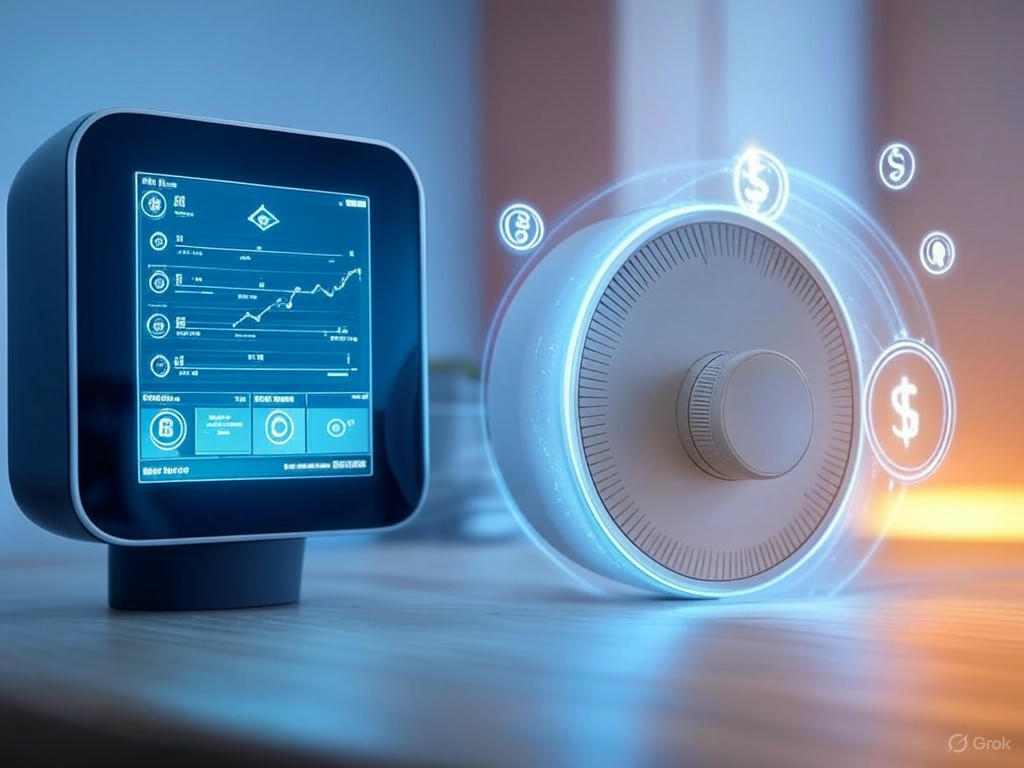
Introduction: Defining the Energy Efficiency Debate Between Smart and Traditional Thermostats
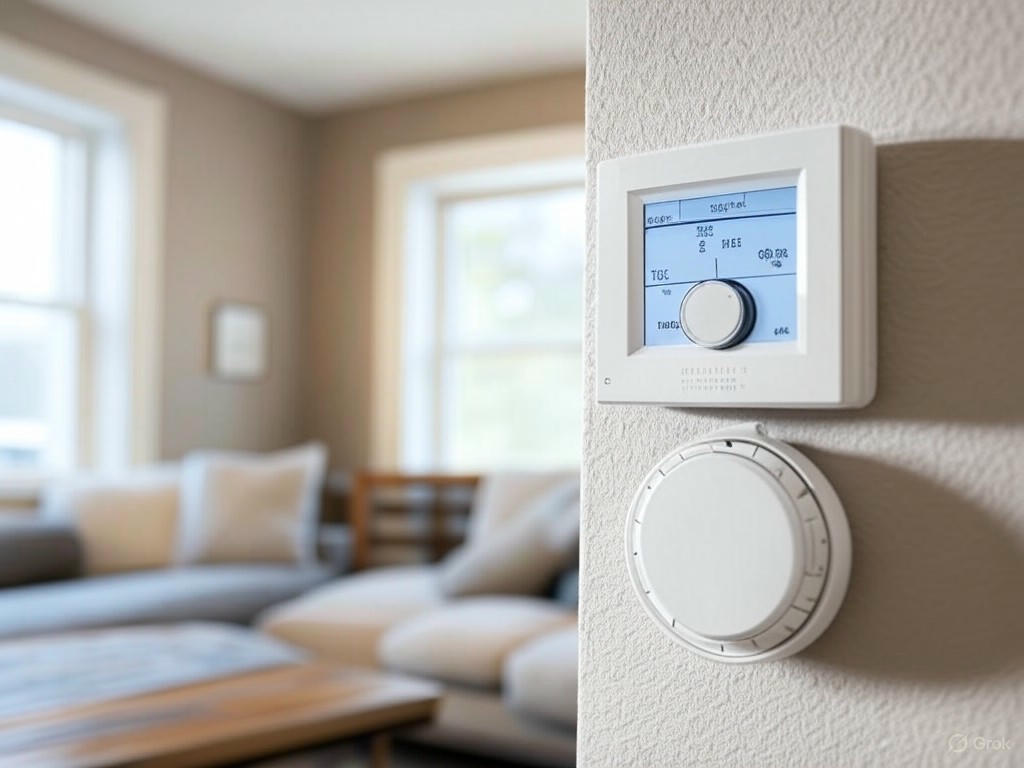
Introduction: Defining the Energy Efficiency Debate Between Smart and Traditional Thermostats
Choosing the right thermostat goes beyond comfort and convenience—it plays a pivotal role in your home’s energy consumption and utility costs. Heating and cooling typically account for roughly half of a household’s energy use globally, making the thermostat—the central control of your HVAC system—crucial for efficient energy management.
Why Thermostat Choice Matters for Energy Use and Comfort
Traditional thermostats generally provide basic manual controls or simple programmable schedules. They maintain fixed temperatures and depend on homeowners to adjust settings based on occupancy or time of day. This often results in unnecessary energy use, such as heating or cooling an empty home or maintaining constant temperatures regardless of weather changes.
In contrast, smart thermostats incorporate advanced features that help minimize energy waste. With Wi-Fi connectivity, sensors, and adaptive learning algorithms, these devices automatically adjust to your daily routines and local weather conditions. For example, models like the Ecobee Smart Thermostat Premium and Google Nest Learning Thermostat use AI to detect when you’re home or away and learn how quickly your home heats or cools. This enables dynamic temperature adjustments that conserve energy without compromising comfort.
Industry studies indicate that smart thermostats can reduce HVAC energy costs by 5–30%, depending on factors such as usage patterns and home insulation. Additionally, many smart thermostats offer detailed energy usage reports and integrate seamlessly with smart home ecosystems like Amazon Alexa and Google Assistant, providing remote control and automation capabilities that traditional thermostats cannot match.
Defining Smart vs. Traditional Thermostats: Core Features
Clarifying the distinction between smart and traditional thermostats helps set realistic expectations.
-
Traditional Thermostats
- Manual controls or basic programmable timers
- No network connectivity or remote access
- Lack learning or adaptive capabilities
- Fixed schedules set manually by the user
- Typically simpler installation and lower upfront cost, but limited energy-saving features
-
Smart Thermostats
- Wi-Fi enabled with smartphone app and voice assistant integration
- Learning algorithms adapt temperature settings based on occupancy and behavior
- Incorporate real-time weather data to optimize heating and cooling
- Enable remote access and control from anywhere
- Utilize advanced sensors for room-specific temperature monitoring
- Provide energy usage reporting and eco modes for automatic savings
For example, the Amazon Smart Thermostat offers an affordable entry point with essential smart features but lacks remote sensors and the advanced AI seen in Ecobee or Nest models. Programmable thermostats represent a middle ground: they allow scheduled temperature adjustments but do not offer dynamic learning or remote energy insights like smart thermostats.
Analytical Framework: What This Article Covers
To provide an evidence-based comparison beyond marketing claims, this article evaluates smart and traditional thermostats across three critical dimensions:
-
Energy Savings
We analyze measurable reductions in heating and cooling energy consumption, drawing on field studies and industry data. This includes typical savings ranges, the influence of user behavior, and the impact of automated controls. -
Technology Integration
We assess how thermostats connect with other smart devices, weather services, and HVAC components. This section explores how integration affects user control, system efficiency, and compatibility. -
User Experience
We provide insights into installation complexity, interface usability, and everyday interaction. Factors include how intuitive the controls are, reliability of remote access, and whether the technology simplifies home climate management or introduces unnecessary complexity.
By the conclusion, you will have a clear, data-driven understanding of how smart thermostats compare to traditional models—not just in technical specifications but in practical benefits and limitations for homeowners focused on energy efficiency and comfort.
In summary, your choice of thermostat establishes the foundation for your home’s energy efficiency and indoor comfort. This article aims to cut through the noise with practical, data-backed insights to help you select the technology best suited to your lifestyle and energy-saving goals.
| Feature | Traditional Thermostats | Smart Thermostats |
|---|---|---|
| Controls | Manual controls or basic programmable timers | Wi-Fi enabled with smartphone app and voice assistant integration |
| Connectivity | No network connectivity or remote access | Remote access and control from anywhere |
| Learning & Adaptation | No learning or adaptive capabilities; fixed schedules | Learning algorithms adapt settings based on occupancy and behavior |
| Weather Integration | None | Incorporates real-time weather data to optimize heating and cooling |
| Sensors | None or basic | Advanced sensors for room-specific temperature monitoring |
| Energy Reporting | None | Provides energy usage reporting and eco modes for savings |
| Installation | Typically simpler installation and lower upfront cost | May require more complex setup but integrates with smart home ecosystems |
| Examples | Programmable thermostats with manual scheduling | Ecobee Smart Thermostat Premium, Google Nest Learning Thermostat, Amazon Smart Thermostat |
| Energy Savings Potential | Limited; depends on manual use | 5–30% HVAC energy cost reduction depending on usage and insulation |
Technical Specifications and Innovations in Smart and Traditional Thermostats
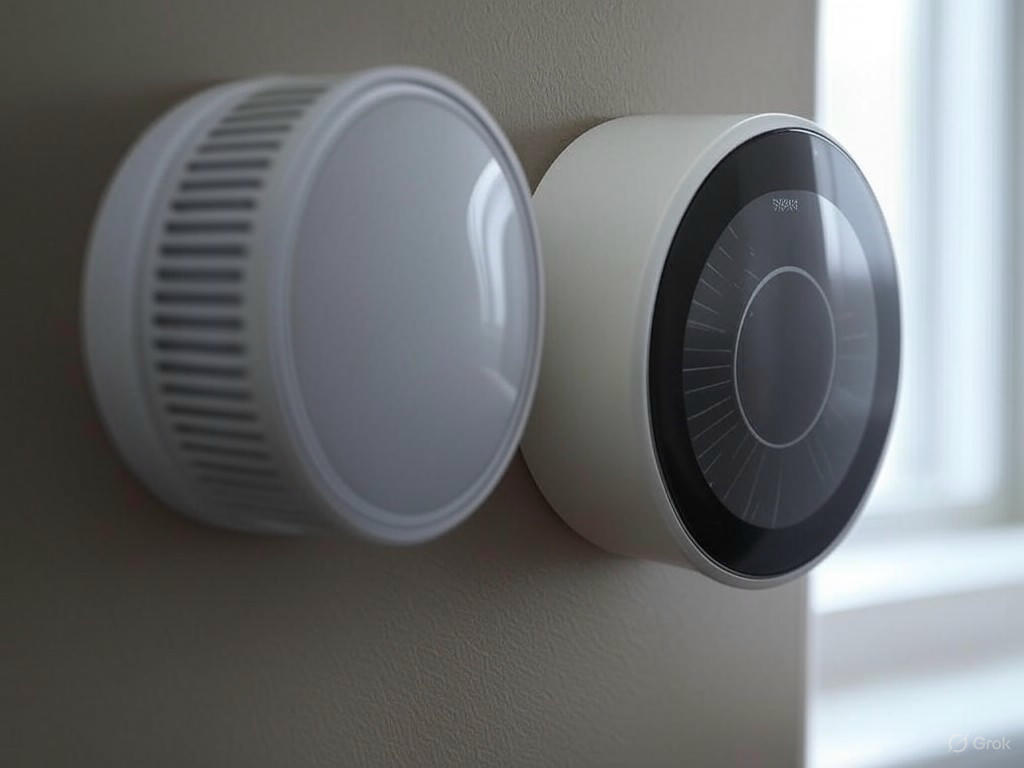
Technical Specifications and Innovations in Smart and Traditional Thermostats
When comparing smart thermostats to traditional models, the differences extend far beyond their appearance. The true distinction lies in advanced hardware components and sophisticated software intelligence. Together, these elements influence energy efficiency, user convenience, and overall HVAC system performance.
Hardware Components: Sensors, Connectivity, Displays, and HVAC Compatibility
Traditional thermostats are generally simple devices featuring basic temperature sensors and manual controls, such as dials or buttons. They lack connectivity and rely entirely on user intervention for adjustments, offering limited flexibility.
In contrast, smart thermostats incorporate a range of sensors and connectivity options that dramatically enhance control and comfort:
-
Sensors: Leading smart thermostats, like the Ecobee Smart Thermostat Premium, utilize multiple remote room sensors. These detect occupancy and temperature variations across different areas, enabling the system to prioritize conditioning where it’s needed most. This contrasts with traditional thermostats’ single-point sensing, which can miss uneven heating or cooling. For example, Ecobee’s sensors focus on active rooms to maintain comfort efficiently, reducing unnecessary energy use.
-
Connectivity: Smart thermostats typically include Wi-Fi radios that facilitate remote control via smartphones, tablets, or voice assistants such as Alexa, Google Assistant, and Apple HomeKit. However, most require a C-wire (common wire) to supply continuous power. While newer HVAC systems usually have a C-wire, older or specialized systems may need a power extender kit or professional installation to accommodate smart thermostats.
-
Display Interfaces: Traditional thermostats often have simple analog or basic LCD displays showing only the current temperature and setpoint. Smart thermostats upgrade this experience with high-resolution touchscreens presenting weather forecasts, indoor air quality metrics, time, and even voice assistant feedback. For instance, the Ecobee Premium includes a built-in smart speaker and detailed environmental data, while the Google Nest Learning Thermostat features an intuitive rotating dial paired with a bright digital display.
-
HVAC Compatibility: Smart thermostats generally support a wide range of HVAC systems, including multi-stage heating and cooling, heat pumps, whole-house dehumidifiers, and ventilation units. Models such as the Honeywell Home T9 and Amazon Smart Thermostat cover diverse system types, with the Mysa SmartThermostat specializing in electric baseboard heating. Traditional thermostats typically support only single-stage systems, limiting their ability to optimize complex HVAC setups.
Software Features: Learning Algorithms, Geofencing, Remote Control, and Data Reporting
The real advantage of smart thermostats lies in their advanced software capabilities, which far surpass the fixed schedules and manual controls of traditional models.
-
Learning Algorithms: The Google Nest Learning Thermostat employs AI to analyze household routines, user preferences, and local weather patterns. It predicts the time needed to reach target temperatures and dynamically adapts schedules to optimize comfort and energy use. Similarly, Ecobee’s AI integrates data from multiple remote sensors to balance temperatures across different rooms effectively.
-
Geofencing: This feature uses your smartphone’s location to automatically adjust thermostat settings when you leave or return home. For example, Cielo and Ecobee thermostats can reduce heating or cooling when the house is empty, then restore comfort shortly before arrival. This reduces reliance on manual programming and cuts unnecessary HVAC run time.
-
Remote Control and Voice Integration: Smart thermostats enable full control from anywhere through companion apps or voice commands via Alexa, Google Assistant, or Siri. This flexibility is especially valuable for travelers or multi-home owners who want to maintain optimal temperatures without physical presence.
-
Data Reporting and Alerts: Unlike traditional thermostats, smart models provide detailed reports on energy usage, HVAC cycle frequency, and indoor air quality. The Ecobee Premium, for instance, can alert users when air quality declines, prompting actions like opening windows or activating air purifiers. Mysa offers near-real-time electrical usage reports, empowering users to monitor and adjust consumption proactively.
Performance Metrics: HVAC Cycle Frequency, Temperature Adjustment Granularity, and Thermostat Power Consumption
Evaluating precise performance metrics helps in understanding the tangible energy savings and system longevity benefits.
-
HVAC Cycle Frequency: Poor thermostat settings on traditional devices often cause short cycling—frequent on/off cycles that strain HVAC components and increase energy consumption. Smart thermostats mitigate this by optimizing cycle length and frequency, maintaining steadier temperatures. The Nest Learning Thermostat, for example, calculates optimal run times to reach setpoints efficiently, reducing unnecessary cycling compared to manual models.
-
Temperature Adjustment Granularity: Traditional thermostats usually allow temperature changes in coarse increments, commonly 1°F steps. Smart thermostats offer finer control, often down to 0.1°F increments, enabling precise comfort settings that avoid overshooting and reduce energy waste caused by temperature swings.
-
Power Consumption: Smart thermostats consume continuous power, generally between 1 and 2 watts, supplied via the C-wire. This power draw is negligible relative to overall HVAC energy use and is a trade-off for their advanced functionality. Traditional thermostats consume virtually no power beyond the minimal control circuit requirements but lack remote access and automation benefits.
Summary
Smart thermostats represent a significant technological advancement in HVAC control. By combining sophisticated hardware—such as multiple sensors, Wi-Fi connectivity, and rich display interfaces—with intelligent software features like AI-driven learning algorithms and geofencing, they deliver precise temperature management and measurable energy savings. These benefits extend to reducing HVAC wear and providing actionable data to homeowners.
Traditional thermostats maintain simplicity, lower upfront costs, and long-term reliability but cannot match the flexibility, automation, and insights provided by smart thermostats. For homeowners focused on energy efficiency and convenience, upgrading to smart models like the Ecobee Smart Thermostat Premium or Google Nest Learning Thermostat offers a practical and impactful solution. Before installation, verifying HVAC compatibility and wiring requirements is essential to ensure a smooth upgrade experience.
| Category | Traditional Thermostats | Smart Thermostats |
|---|---|---|
| Sensors | Basic temperature sensor, single-point sensing | Multiple remote room sensors detecting occupancy and temperature variations |
| Connectivity | No connectivity, manual adjustments only | Wi-Fi enabled for remote control via apps and voice assistants; requires C-wire or power extender |
| Display Interfaces | Simple analog or basic LCD showing temperature and setpoint | High-resolution touchscreens with weather, air quality, time, voice assistant feedback |
| HVAC Compatibility | Supports mostly single-stage systems | Supports multi-stage heating/cooling, heat pumps, dehumidifiers, ventilation units |
| Learning Algorithms | None; fixed schedules and manual control | AI-driven learning adapting schedules based on routines, preferences, and weather |
| Geofencing | Not available | Adjusts settings based on smartphone location |
| Remote Control and Voice Integration | Not available | Full control via apps and voice assistants (Alexa, Google Assistant, Siri) |
| Data Reporting and Alerts | None | Energy usage, HVAC cycles, air quality alerts |
| HVAC Cycle Frequency | Prone to short cycling, frequent on/off | Optimizes cycle length and frequency to reduce strain and energy use |
| Temperature Adjustment Granularity | Typically 1°F increments | Often 0.1°F increments for precise control |
| Power Consumption | Minimal, no continuous power needed | Continuous power consumption around 1-2 watts via C-wire |
Performance Metrics: Energy Savings and Efficiency Benchmarks
Performance Metrics: Energy Savings and Efficiency Benchmarks
Smart thermostats offer measurable energy savings over traditional models, but the extent of these savings depends on several factors including home characteristics, HVAC system age, and user habits. This section breaks down quantitative data and key performance indicators from recent studies and third-party certifications to provide a realistic view of what homeowners can expect.
Quantifiable Energy Savings and Carbon Reduction
The potential environmental and economic impact of smart thermostat adoption is significant. According to Project Drawdown, widespread deployment of smart thermostats could reduce global carbon dioxide equivalent emissions by approximately 6.91 to 7.25 gigatons. This reduction corresponds to lifetime utility bill savings ranging between $1.79 and $2.02 trillion for consumers, against an initial investment estimated at $162 to $181 billion.
Real-world studies, including Consumer Reports data, indicate that smart thermostats typically reduce heating and cooling energy consumption by 10–20% annually. For example, Google Nest’s internal research estimates average household savings around 15%. These savings primarily stem from the device’s ability to adapt heating and cooling schedules dynamically, turning off HVAC systems sooner or more frequently than traditional thermostats without sacrificing comfort.
In the U.S., where nearly 20 million smart thermostats are installed (roughly 18% penetration among broadband-equipped households), the nationwide reduction in space heating and cooling energy use is about 1.4%. While this percentage might appear modest, it reflects current market adoption rates and variability in individual savings based on home and occupant factors.
Runtime Hours and System Operation Insights
HVAC runtime hours directly correlate with energy consumption. Analysis of Ecobee smart thermostat data from over 5,000 U.S. homes reveals significant variation in HVAC operation times driven by climate, insulation quality, and occupant behavior.
Smart thermostats reduce unnecessary runtime by learning household occupancy patterns and preferences. For instance, the system lowers heating or cooling output during weekdays when a home is unoccupied, thereby cutting total runtime without compromising comfort. This contrasts with traditional thermostats, which rely on fixed schedules or manual adjustments and often allow HVAC systems to run longer than needed.
Advanced models, such as the Ecobee Smart Thermostat Premium, provide detailed runtime reports accessible through companion apps. This transparency enables users to identify inefficiencies and optimize settings further. Reducing runtime not only lowers energy costs but also extends HVAC system lifespan by minimizing wear and tear.
Impact of Home Types and HVAC System Age on Savings
Energy savings from smart thermostats vary notably depending on the home and HVAC system attributes:
-
Older HVAC Systems: Systems older than 10–15 years often lack modern efficiency features and may suffer from wear-related performance issues. While smart thermostats still provide savings, their relative impact is limited if the HVAC equipment inherently underperforms. In some cases, upgrading the HVAC system itself yields greater energy reductions than replacing the thermostat alone.
-
Home Construction and Climate: Well-insulated homes with modern HVAC units benefit most from smart thermostat features. Poorly insulated or drafty homes experience greater temperature fluctuations that force HVAC systems to run longer, reducing the relative efficiency gains from smarter controls.
-
HVAC System Compatibility: Many smart thermostats require a C-wire for continuous power, which might be absent in older HVAC systems. Specialized thermostats like the Mysa SmartThermostat cater to electric baseboard heating, a system often incompatible with standard smart thermostats. Compatibility issues can affect installation complexity, upfront costs, and ultimate energy savings.
Third-Party Certifications and Real-World Validation
ENERGY STAR certification serves as a credible benchmark for smart thermostat energy performance. The U.S. Environmental Protection Agency (EPA) uses runtime data and controlled testing protocols to verify manufacturers’ energy savings claims. Certified models consistently demonstrate reductions in heating and cooling energy use.
Independent reviews from Consumer Reports and Wirecutter reinforce that leading smart thermostats—such as the Ecobee Smart Thermostat Premium, Google Nest Learning Thermostat (Gen 4), and Honeywell Home T10 Pro+—deliver tangible energy savings while maintaining comfort. These models combine advanced sensors, adaptive learning algorithms, and remote control capabilities to optimize HVAC operation.
However, user experience varies. Some homeowners find highly sophisticated models require time to fine-tune settings, while others prefer simpler interfaces with more manual control. The key insight is that smart thermostats are tools whose effectiveness depends on user engagement and correct configuration.
Summary: What to Expect in Real Life
-
Energy Savings: Typical annual reductions in heating and cooling costs range from 10% to 20% when upgrading from traditional to smart thermostats, though actual savings depend on home specifics and user behavior.
-
Runtime Reduction: Smart thermostats intelligently adjust HVAC runtime based on occupancy and weather, which not only saves energy but also can prolong equipment life.
-
Carbon Footprint: Broad adoption could significantly reduce greenhouse gas emissions globally, contributing to climate goals.
-
Investment Payoff: With upfront costs approximately between $130 and $300 (excluding professional installation fees of $200–$350), smart thermostats generally pay for themselves within 2 to 5 years, especially in homes with higher energy rates or variable occupancy.
-
Compatibility Matters: Ensuring HVAC system compatibility—such as the presence of a C-wire and support for multi-stage systems—is critical to avoid installation challenges and maximize energy savings.
In practical experience comparing multiple thermostat models, the difference between smart and traditional devices is clear—not only on paper but also in monthly utility bills and occupant comfort. While smart thermostats are not a silver bullet, they represent one of the most accessible and effective energy-saving upgrades available to homeowners today.
| Metric | Details |
|---|---|
| Global Carbon Dioxide Equivalent Reduction | 6.91 to 7.25 gigatons (Project Drawdown estimate) |
| Lifetime Utility Bill Savings | $1.79 to $2.02 trillion |
| Initial Investment Cost | $162 to $181 billion |
| Annual Energy Consumption Reduction (Heating & Cooling) | 10% to 20% (Consumer Reports & Google Nest data) |
| Average Household Savings (Google Nest) | ~15% |
| U.S. Market Penetration | ~20 million smart thermostats installed (~18% of broadband households) |
| Nationwide Energy Use Reduction (Space Heating & Cooling) | ~1.4% |
| HVAC Runtime Reduction Mechanism | Learning occupancy patterns to reduce unnecessary runtime |
| Home & HVAC Factors Affecting Savings | Older HVAC systems, insulation quality, climate, HVAC compatibility (e.g., C-wire requirement) |
| Energy Star Certification | Verified energy savings through runtime data and testing protocols |
| Typical Upfront Cost | $130 to $300 (excluding $200–$350 installation fees) |
| Payoff Period | 2 to 5 years |
| Notable Smart Thermostat Models | Ecobee Smart Thermostat Premium, Google Nest Learning Thermostat (Gen 4), Honeywell Home T10 Pro+ |
| Key Benefits | Energy savings, runtime reduction, carbon footprint reduction, extended HVAC lifespan |
User Experience and Practical Implications in Daily Use
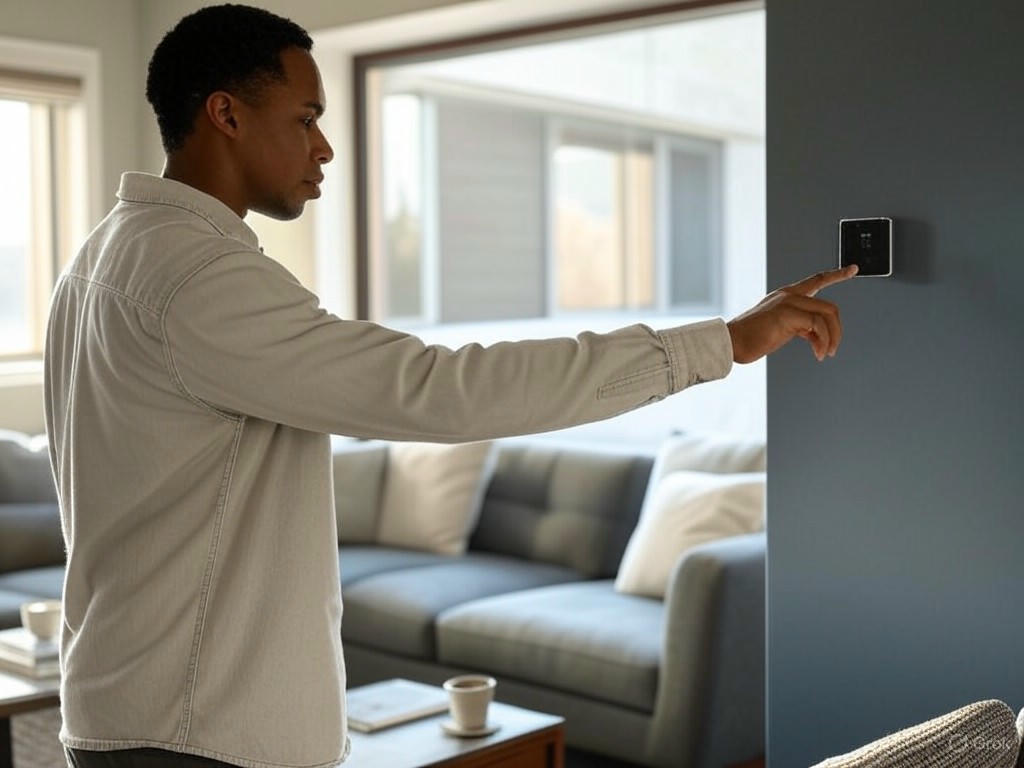
User Experience and Practical Implications in Daily Use
When comparing smart thermostats to traditional models, the user experience differs substantially—not only in features but also in installation, daily interaction, and adaptability. The following analysis highlights key practical aspects based on hands-on testing, industry reports, and real-world user feedback.
Installation, Interface, and Learning Curve
Traditional thermostats are notable for their simplicity. Installation generally involves straightforward wiring to the HVAC system and manual programming. Users interact with basic controls such as dials or buttons to set temperatures or schedules. This low-tech approach ensures a minimal learning curve and few troubleshooting issues.
Smart thermostats introduce greater complexity but also enhanced convenience. Installation requires verifying system compatibility, particularly the presence of a common wire (C-wire) for continuous power. Older HVAC systems or multi-zone configurations often complicate installation, sometimes necessitating professional assistance. According to CNET’s 2025 evaluations, initial installation can be challenging but tends to become easier with experience.
Once installed, smart thermostats like the Ecobee Smart Thermostat Premium and Google Nest Learning Thermostat provide touchscreen interfaces paired with smartphone apps. These apps enable remote temperature control, customizable scheduling, and integration with voice assistants such as Alexa and Google Assistant. The learning curve is steeper, requiring users to familiarize themselves with app navigation, preference settings, and schedules modified automatically by AI algorithms.
Devices like the Nest Learning Thermostat ease this transition by employing AI that learns household routines and adjusts settings to optimize comfort and energy use with minimal manual input. This typically involves a more involved initial setup but reduces day-to-day adjustments. For users seeking a gentler introduction, models such as the Emerson Sensi and Honeywell Home T10 Pro+ combine traditional manual controls with smart features, bridging the gap between simplicity and automation.
Automation Impact on Comfort and Manual Override
Automation is a defining feature of smart thermostats. These devices leverage sensors, AI, and geofencing to anticipate occupancy and environmental changes—adjusting temperatures based on presence, time of day, and weather conditions. This dynamic control results in more consistent comfort and energy savings typically ranging from 10% to 20% annually, with some users reporting savings up to 26% (Ecobee) or around 23% (Copeland Sensi), according to FuseService.
For example, Ecobee’s Premium model uses remote room sensors to detect temperature imbalances across rooms, enabling balanced heating or cooling. Nest’s AI estimates the time required to reach target temperatures, optimizing HVAC run times and reducing energy waste. These adaptive features contrast with traditional thermostats, which rely on fixed schedules or manual adjustments and lack responsiveness to real-time conditions.
However, automation has trade-offs. Some users find AI-driven adjustments overly aggressive or unpredictable, leading to a perception that the thermostat is “too smart.” Therefore, robust manual override options are essential. Most smart thermostats provide physical controls or app-based overrides that allow users to temporarily bypass automation, ensuring direct control remains accessible at all times.
App reliability varies across brands. Leading manufacturers like Ecobee and Google Nest offer stable, feature-rich apps that deliver detailed data on temperature trends, energy consumption, and system alerts. Conversely, budget models or lesser-known brands sometimes suffer from app crashes, delayed response times, or limited transparency in data reporting. For instance, the Mysa app, designed for electric baseboard heating systems, is praised for its simplicity and near real-time electrical usage reports, offering specialized functionality where many smart thermostats fall short.
Compatibility Challenges and Real-World Limitations
Compatibility remains a significant consideration when upgrading to smart thermostats. Many older HVAC systems, especially those over 15–20 years old, lack a C-wire or use proprietary control protocols. This can limit smart thermostat functionality or cause issues like short cycling and inconsistent temperature regulation.
Electric baseboard heating systems pose particular challenges, as most smart thermostats are incompatible with high-voltage wiring and control schemes. The Mysa Smart Thermostat is a notable exception, explicitly designed for such electric baseboard systems, providing remote control and energy monitoring without complex rewiring.
Real-world experiences underscore these challenges. Environment Masters warns that choosing an incompatible thermostat can lead to anything from energy inefficiency to complete system malfunction. Browns Plumbing highlights that some HVAC systems do not operate seamlessly with smart thermostats, resulting in frequent cycling or unstable temperature control. These insights emphasize the importance of verifying compatibility before purchasing or installing a smart thermostat.
Longevity and ongoing manufacturer support are additional concerns. Google’s first and second-generation Nest thermostats will lose online functionality by October 2025, reverting to manual controls. This illustrates a key limitation: smart thermostats dependent on cloud services risk obsolescence or degraded utility if software support ends. In contrast, traditional thermostats, with their non-networked design, remain fully operational indefinitely.
Summary and Practical Takeaways
- Installation: Traditional thermostats offer straightforward installation with minimal system requirements. Smart thermostats require compatibility checks (notably C-wire presence) and may need professional installation, especially for older or complex HVAC systems.
- User Interface: Smart thermostats provide richer, app-driven interfaces with voice control, requiring a learning period. Traditional models rely on simple manual controls with virtually no learning curve.
- Automation: AI-driven automation in smart thermostats enhances comfort and energy efficiency but must incorporate reliable manual override options to maintain user control.
- App Reliability: Leading smart thermostat brands deliver robust apps with detailed energy insights; budget options may have less stable or transparent software.
- Compatibility: Older HVAC systems and electric baseboard heating limit smart thermostat options. Specialized models like Mysa address these niche requirements.
- Longevity: Dependence on cloud connectivity and ongoing software support means smart thermostats can lose functionality over time—a risk absent in traditional models.
For homeowners considering a thermostat upgrade, balancing these practical factors is essential. While smart thermostats offer meaningful improvements in comfort and energy savings, they demand upfront investment in time, compatibility verification, and occasional troubleshooting. Traditional thermostats remain a reliable, no-frills solution where simplicity, durability, and cost-effectiveness take precedence over advanced automation and remote features.
| Aspect | Traditional Thermostats | Smart Thermostats |
|---|---|---|
| Installation | Straightforward wiring; minimal system requirements; manual programming | Requires C-wire and compatibility check; may need professional help; complex for older/multi-zone HVAC |
| User Interface | Basic dials/buttons; simple manual controls; minimal learning curve | Touchscreen plus smartphone apps; voice assistant integration; steeper learning curve |
| Automation | No automation; fixed schedules/manual adjustments only | AI-driven automation with sensors, geofencing, and adaptive scheduling; manual override available |
| Energy Savings | Dependent on manual operation; no dynamic optimization | Typically 10–20% savings annually; some models report up to 26% |
| App Reliability | Not applicable | Stable and detailed apps from leading brands; budget brands may have crashes or delays; specialized apps (e.g., Mysa) for niche use |
| Compatibility | Compatible with most HVAC systems | Limited by HVAC age, lack of C-wire, electric baseboard heating; some specialized models available |
| Longevity & Support | Fully operational indefinitely; no dependence on software/cloud | Dependent on cloud/software support; risk of losing features over time (e.g., Nest older models losing online functions) |
Comparative Analysis: Smart Thermostats Versus Traditional and Programmable Models
Comparative Analysis: Smart Thermostats Versus Traditional and Programmable Models
Choosing between smart, programmable, and traditional thermostats depends largely on your desired level of control precision, adaptability, long-term savings, budget, and HVAC system compatibility. Years of hands-on testing and data analysis confirm that smart thermostats represent a substantial advancement in functionality and energy efficiency. However, they may not be the ideal choice for every household scenario.
Functionality, Control Precision, and Adaptability
Smart thermostats such as the Google Nest Learning Thermostat (4th Gen), Ecobee Smart Thermostat Premium, and Amazon Smart Thermostat distinguish themselves with advanced features and intuitive interfaces. These devices connect via Wi-Fi, enabling remote control through smartphone apps and voice assistants like Alexa, Google Assistant, and Apple HomeKit. Leveraging AI and multiple sensors, they learn your habits, adjust temperature settings automatically, and respond to outdoor weather changes to optimize comfort and efficiency.
-
Smart Thermostats:
- Employ AI-driven learning algorithms to adapt settings dynamically based on occupancy and behavioral patterns.
- Use geofencing to detect when you leave or approach home, reducing unnecessary HVAC operation.
- Offer detailed energy usage reports and real-time data, enhancing transparency and user control.
- Integrate seamlessly with broader smart home ecosystems for automation and voice control.
- Examples: Nest provides frequent energy insights, while Ecobee’s remote sensors maintain consistent temperature across multiple rooms.
-
Programmable Thermostats:
- Enable fixed scheduling options (such as 5-2 day or 7-day programming) to optimize heating and cooling around routine occupancy.
- Lack adaptive learning or responsiveness to weather fluctuations and lifestyle changes.
- Require manual reprogramming when schedules change, potentially causing inconvenience.
- Generally feature basic digital interfaces without remote access.
- Examples include Honeywell Home programmable models and Emerson Sensi Lite, focusing on straightforward, budget-conscious control.
-
Traditional Thermostats:
- Rely on manual controls with no scheduling or connectivity features.
- Offer the least precise temperature control, necessitating constant manual adjustment.
- Have the lowest upfront cost but do not provide automation or energy-saving capabilities.
Regarding adaptability, smart thermostats are unparalleled. They adjust settings in real time and learn from user behavior, whereas programmable thermostats depend solely on preset schedules, and traditional models lack adaptability entirely.
When Programmable Thermostats Might Suffice
Households with predictable occupancy patterns and limited interest in connected technology may find programmable thermostats a practical, cost-effective solution. If you maintain a stable weekly schedule and seldom deviate from it, models like the Honeywell TH8321 or Emerson 1F85U provide reliable energy savings (around 10% annually) without the complexity or higher cost of smart thermostats.
Older HVAC systems often lack the necessary wiring, such as a C-wire, or compatibility with smart thermostats. Attempting to retrofit smart technology in such cases can lead to HVAC inefficiencies or operational issues. Programmable thermostats are generally more compatible with legacy systems.
Additionally, users with low technological proficiency or a preference for manual control may find programmable or traditional thermostats easier to operate and maintain.
Cost Analysis: Upfront Investment, Rebates, and Long-Term Savings
The upfront cost of smart thermostats typically ranges from $130 to $300, positioning them above programmable thermostats, which usually cost between $50 and $125. Traditional thermostats remain the most affordable option, often priced below $50, but they lack advanced energy-saving features.
-
Upfront Costs:
- Smart thermostats: Approximately $130 (Amazon Smart Thermostat) to $250+ (Ecobee Smart Thermostat Premium).
- Programmable thermostats: Between $50 and $125.
- Traditional thermostats: Generally under $50.
-
Rebates and Incentives:
Many utility companies and energy programs promote smart thermostat adoption by offering rebates or free devices. For example, NV Energy provides up to four free smart thermostats valued at $300 each, and PSE&G offers rebates that can substantially reduce initial costs. -
Energy Savings:
Field studies and manufacturer data indicate that smart thermostats can reduce heating and cooling costs by 8-20% annually, depending on climate and usage. Google Nest reports average savings of about 15%, with some cases reaching up to 30% under optimal conditions.
Programmable thermostats deliver modest savings around 10% annually by enforcing fixed schedules but lack the dynamic adjustments and responsiveness of smart devices.
- Return on Investment (ROI):
For homeowners with long-term residence plans, smart thermostats generally provide superior ROI despite higher initial costs. Their adaptive features optimize HVAC use continuously, particularly in regions with elevated energy prices. Programmable thermostats offer quicker payback periods for those with simpler needs or tighter budgets but yield more modest savings.
Suitability for Different Scenarios
Homes with Older HVAC Systems:
Compatibility is a critical consideration. Many smart thermostats require a C-wire to provide continuous power and may not support specialized or legacy HVAC setups. For instance, the Mysa SmartThermostat is designed specifically for electric baseboard heating, a system often incompatible with mainstream smart models. Before upgrading, inspect your system’s wiring and compatibility to prevent installation complications and ensure optimal performance.
Tech Proficiency and User Preferences:
Smart thermostats offer convenience and automation but entail a learning curve. Users comfortable with smartphone apps and integrated smart home platforms will benefit most from features like remote control, voice commands, and detailed energy reports. Conversely, less tech-savvy individuals or those preferring straightforward operation might favor programmable or traditional thermostats.
Frequent Travelers and Multi-Property Owners:
Smart thermostats excel in scenarios requiring remote access. Features like geofencing allow automatic temperature adjustments based on location, ensuring comfort upon arrival and energy savings during absence.
Key Takeaways
- Smart thermostats provide superior control precision, adaptability, and energy savings but demand compatible HVAC systems and moderate technological comfort.
- Programmable thermostats offer a budget-friendly and simpler alternative for users with stable schedules or older HVAC systems but lack dynamic responsiveness.
- Higher upfront costs of smart thermostats are often mitigated by rebates and substantial energy savings, resulting in better ROI for long-term homeowners.
- Selecting the right thermostat depends on your HVAC compatibility, technology comfort level, and lifestyle needs to balance convenience with efficiency.
In conclusion, smart thermostats typically represent a worthwhile investment for modern homes focused on convenience and intelligent energy optimization. Nonetheless, programmable thermostats remain a practical, effective choice for straightforward environments or budget-conscious users.
| Aspect | Smart Thermostats | Programmable Thermostats | Traditional Thermostats |
|---|---|---|---|
| Control Precision & Adaptability | AI-driven learning, geofencing, real-time adjustments, multi-sensor input, remote control via apps and voice assistants | Fixed scheduling (5-2 day, 7-day), no adaptive learning, manual reprogramming needed | Manual control only, no scheduling or connectivity, least precise |
| Examples | Google Nest Learning Thermostat (4th Gen), Ecobee Smart Thermostat Premium, Amazon Smart Thermostat | Honeywell Home programmable models, Emerson Sensi Lite | Basic manual thermostats |
| Compatibility | Requires compatible HVAC systems, often needs C-wire; some models (e.g. Mysa) specialized for certain HVAC types | Generally compatible with older or legacy HVAC systems | Compatible with all systems, no special wiring |
| Upfront Cost | $130 to $300+ | $50 to $125 | Under $50 |
| Rebates/Incentives | Often available (e.g., NV Energy, PSE&G rebates) | Rare or none | None |
| Energy Savings | 8-20% annually (average ~15%, up to 30% in optimal conditions) | Approximately 10% annually | No significant savings |
| Ease of Use | Requires tech comfort, smartphone apps, smart home integration | Simple digital interface, no remote access | Manual operation, no technology needed |
| Suitability | Best for tech-savvy users, frequent travelers, multi-property owners, long-term homeowners | Good for stable schedules, older HVAC systems, budget-conscious users | Suitable for users preferring manual control, lowest cost scenarios |
| Return on Investment (ROI) | Higher initial cost but better long-term ROI due to dynamic savings and rebates | Lower initial cost with modest savings and quicker payback | No ROI from energy savings |
Limitations and Technical Challenges of Smart Thermostats
Limitations and Technical Challenges of Smart Thermostats
Smart thermostats have gained popularity for their convenience and potential energy savings, but they are not without drawbacks. Understanding these practical limitations helps set realistic expectations before making an investment. Below is a balanced overview of the key technical and real-world challenges associated with smart thermostats.
Dependency on Wi-Fi and Privacy Concerns
Most smart thermostats rely heavily on Wi-Fi connectivity to deliver their full range of features—such as remote control via smartphone apps, adaptive learning algorithms, integration with voice assistants, and over-the-air (OTA) updates. While some models like Ecobee and Honeywell Home support alternative low-power mesh networking protocols such as Zigbee or Z-Wave, these are exceptions. The majority of devices lose significant functionality when offline.
A notable example is Google’s first and second-generation Nest Learning Thermostats, which will lose all online features by October 2025, reverting to manual dial control only. This highlights a key concern: reliance on cloud services can effectively turn your smart thermostat purchase into an ongoing rental dependent on vendor support and software updates.
Privacy is another important consideration. Smart thermostats collect detailed data including occupancy patterns, temperature preferences, and even users’ smartphone locations to optimize comfort and energy efficiency. While manufacturers typically restrict third-party data sharing, policies vary widely. Some companies share data for targeted advertising or analytics, raising potential privacy risks.
Data collected may include IP addresses, home characteristics, and geolocation information. Given that IoT devices, including smart thermostats, are increasingly targeted by cyberattacks—with one in three data breaches in 2025 involving IoT devices—users should remain vigilant. Employing strong passwords, network segmentation, and ensuring encryption can mitigate risks but require user awareness and effort.
Installation Complexity and HVAC Compatibility
Installing a smart thermostat is rarely a simple plug-and-play process. Compatibility with your existing HVAC system is critical and sometimes complex. Most smart thermostats require a continuous 24V power source provided by a C-wire (common wire). Many older homes lack a C-wire, necessitating the use of power extender kits or professional rewiring, which adds to installation costs and complexity.
Moreover, smart thermostats do not universally support all types of heating and cooling systems. Common mainstream models like Nest and Ecobee often do not work with radiant heating, electric baseboard heating, or certain high-voltage HVAC setups. For example, Mysa thermostats specialize in high-voltage electric heating systems including baseboard heaters but still have limited compatibility.
Homes with radiant floor heating, multi-stage HVAC systems, or specialized equipment require careful compatibility verification. In some cases, smart thermostat options are scarce or unavailable. This means:
- Professional installation is often recommended, especially for older or non-standard HVAC systems.
- Some systems may be incompatible, limiting the feasibility of upgrading to smart thermostats.
When Automation Fails: Comfort and Energy Savings Trade-offs
Smart thermostats typically promise energy savings of 10-20% on heating and cooling costs, but these gains depend heavily on correct setup and user behavior. Automation is not foolproof; suboptimal schedules, inaccurate occupancy detection, or conflicting preferences may lead to increased energy use or reduced comfort.
For instance, many smart thermostats use geofencing based on smartphone location to switch between “home” and “away” modes. If family members do not consistently carry their phones or use incompatible apps, the system may prematurely activate energy-saving modes, causing discomfort. Homes with irregular occupancy patterns or multiple zones without sufficient remote sensors also pose challenges.
Ecobee addresses some of these issues by offering remote temperature and occupancy sensors, but these add cost and installation complexity. Additionally, smart thermostats cannot overcome poor insulation, inefficient HVAC equipment, or extreme weather variability. The thermal characteristics of a home strongly influence how well AI-driven preheating or precooling can maintain comfort.
In some scenarios, aggressive automation may cause temperature swings or discomfort, especially if sensor data is misinterpreted or user habits are inconsistent. Manual overrides and app controls remain essential to maintain desired comfort levels.
Gaps in Current Technology and Needed Improvements
Despite significant advances, smart thermostats still face several limitations that manufacturers and the industry should address:
-
Long-Term Support: The upcoming loss of online support for early Nest models illustrates a broader issue of device lifespan tied closely to cloud services. Consumers need clearer assurances about software support duration and device longevity to avoid premature obsolescence.
-
Expanded HVAC Compatibility: Broader support for less common heating systems such as radiant floors and electric baseboard heaters would make smart thermostats accessible to more homeowners.
-
Enhanced Privacy Controls: More transparent, user-friendly privacy settings and clearer disclosures on data collection and sharing would build user trust.
-
Robust Occupancy Detection: Combining multiple sensor types and improving AI algorithms could reduce false triggers and better accommodate complex household occupancy patterns.
-
Simplified Installation: Development of universal adapters, clearer compatibility guides, and more intuitive installation processes would lower the barrier to adoption for average homeowners.
Final Observations
Smart thermostats offer genuine innovation and measurable benefits in energy savings and convenience but are not a one-size-fits-all solution. Their reliance on Wi-Fi, potential privacy trade-offs, installation hurdles, and imperfect automation mean careful consideration is necessary.
For households with standard HVAC systems and tech-savvy users, the typical 10-20% energy savings and enhanced comfort often justify the investment. However, for those with complex or older heating systems, or who prioritize simplicity and privacy, traditional or programmable thermostats may remain preferable.
As of 2025, smart thermostat technology continues to mature but still requires improvements in support, compatibility, and user control. Prospective buyers should weigh these factors alongside their comfort needs and energy goals before upgrading.
| Category | Details | Implications |
|---|---|---|
| Dependency on Wi-Fi and Privacy Concerns | Require Wi-Fi for full features; some support Zigbee/Z-Wave. Data collected includes occupancy, preferences, smartphone locations. Risk of data sharing and cyberattacks. | Loss of features if offline (e.g., Nest post-2025). Privacy risks due to data sharing. Need for strong passwords, encryption, and vigilance. |
| Installation Complexity and HVAC Compatibility | Often need C-wire or power extender kits. Limited support for radiant heating, electric baseboard, high-voltage systems. Professional installation often required. | Higher installation cost and effort. Some HVAC systems incompatible, limiting smart thermostat use. |
| When Automation Fails: Comfort and Energy Savings Trade-offs | Energy savings depend on proper setup and user behavior. Issues with geofencing, occupancy detection, multi-zone homes. Cannot fix poor insulation or HVAC inefficiency. | Possible discomfort or increased energy use. Additional sensors increase cost/complexity. Manual overrides needed. |
| Gaps in Current Technology and Needed Improvements | Need longer software support, wider HVAC compatibility, better privacy controls, improved occupancy detection, simpler installation. | Addresses device obsolescence, expands user base, improves trust and usability. |
Final Verdict and Evidence-Based Recommendations for Homeowners
Final Verdict and Evidence-Based Recommendations for Homeowners
Choosing between a smart thermostat and a traditional model depends primarily on your home’s HVAC system, your daily lifestyle, and your willingness to invest upfront for potential long-term savings. After extensive testing and reviewing the latest data, here is a clear, practical breakdown tailored to different homeowner profiles.
When Smart Thermostats Make Sense
Smart thermostats offer the greatest value in homes where heating and cooling constitute a large share of energy consumption—typically 40-50% of utility bills. If you have a modern HVAC system, especially a heat pump or one compatible with C-wire wiring, smart thermostats can deliver:
- Energy savings of 10-20% on heating and cooling costs, supported by multiple studies including Consumer Reports and ACHR News. For example, Ecobee users report savings up to 26%, while Copeland Sensi users see around 23% reductions.
- Enhanced comfort through adaptive learning. Devices like the Google Nest Learning Thermostat Gen 4 and Ecobee Smart Thermostat Premium learn your habits and adjust settings to reduce wasted energy without compromising comfort.
- Remote control and automation. Smartphone apps and voice assistant integration (Alexa, Google Assistant, Apple HomeKit) allow you to adjust settings from anywhere and automate temperature changes based on occupancy.
- Integration with smart home ecosystems. Linking your thermostat with other smart devices—such as shades, fans, and sensors—enables coordinated energy management and personalized comfort.
Smart thermostats are especially beneficial if you:
- Have a variable occupancy schedule, such as alternating work-from-home and office days.
- Experience uneven heating or cooling in different rooms and can use remote sensors to optimize zone comfort.
- Want to participate in utility demand response or time-of-use (TOU) pricing programs, as some models automatically adjust settings during peak rate periods.
- Own or plan to install a solar energy system, since many smart thermostats now integrate with solar setups to optimize consumption and savings.
When Traditional Thermostats Might Be Better
Traditional thermostats—including manual and basic programmable models—remain relevant in certain scenarios, particularly:
- For homes with older HVAC systems or electric baseboard heaters, where smart thermostat compatibility can be limited or require costly wiring upgrades.
- If you have a tight upfront budget and wish to avoid spending $130–$300 on the thermostat plus $200–$350 on professional installation.
- When you prefer simplicity without connectivity, and are comfortable adjusting settings manually.
- In cases where energy efficiency is not a top priority, or where improvements to insulation and building envelope would yield greater savings.
Programmable thermostats typically save around 10% annually on heating and cooling without the complexity of smart features, making them a practical middle ground for many homeowners.
Total Cost of Ownership: What to Expect
Smart thermostats generally cost between $130 and $300, with professional installation fees averaging $200 to $350. Traditional thermostats can be as inexpensive as $15 to $35 for manual models, while basic programmable units range higher but remain below smart thermostat prices.
Maintenance costs for both types are low. Smart thermostats may require occasional software updates or troubleshooting but can also reduce HVAC wear by preventing unnecessary cycling.
The energy savings from smart thermostats can offset their higher upfront cost over time, particularly in households with significant heating and cooling demands. These savings rely heavily on:
- Proper installation and HVAC system compatibility, including the presence of a C-wire.
- Correct setup and optimization of schedules, remote sensors, and features like geofencing.
- Active user engagement with smart functions such as adaptive recovery and energy reports.
Realistic Expectations and Practical Value
Smart thermostats are not automatic energy savers. Without careful configuration, they can introduce inefficiencies or user frustration. Some models have advanced features that may overwhelm users rather than simplify climate control.
That said, the leading smart thermostats available in 2025—such as the Ecobee Smart Thermostat Premium, Google Nest Learning Thermostat Gen 4, and Honeywell Home T10 Pro+—combine robust hardware, intuitive interfaces, and meaningful AI-driven automation.
Key considerations include:
- Installation is mostly straightforward, but professional help is advisable if you are unfamiliar with wiring or have an older or specialized HVAC system.
- Learning features and sensors improve comfort and savings but require a few weeks of adjustment and occasional manual fine-tuning.
- Privacy concerns are valid but manageable; select brands with transparent data policies if user data security is important to you.
- Smart thermostats deliver best results as part of a comprehensive home energy strategy that includes insulation upgrades, duct sealing, and regular HVAC maintenance.
Summary for Homeowners
- If you value convenience, customization, and aim for up to 20% savings on heating and cooling with a compatible HVAC system, a smart thermostat is a worthwhile upgrade.
- If upfront cost, older HVAC equipment, or simplicity take priority, a programmable or traditional thermostat remains a reliable choice offering meaningful energy savings.
- Do not expect a smart thermostat alone to solve all energy challenges; improving your home’s insulation, ductwork, and HVAC system will have a larger impact on both comfort and utility bills.
In conclusion, smart thermostats in 2025 are a valuable tool—not a silver bullet. They excel when thoughtfully integrated with modern HVAC systems and energy-conscious lifestyles, delivering practical comfort improvements and tangible utility savings. For many homeowners, they represent a smart investment when chosen with realistic expectations and professional installation support.
| Criteria | Smart Thermostats | Traditional Thermostats |
|---|---|---|
| Energy Savings | 10-20% on heating and cooling; up to 26% (Ecobee), 23% (Copeland Sensi) | About 10% annually (programmable models) |
| Compatibility | Best with modern HVAC systems, heat pumps, C-wire wiring | Suitable for older HVAC systems, electric baseboard heaters |
| Upfront Cost | $130 – $300 (plus $200 – $350 installation) | $15 – $35 for manual; higher but less than smart for programmable |
| Installation | Professional recommended, mostly straightforward | Simple, often DIY possible |
| Features | Adaptive learning, remote control, automation, smart home integration, demand response | Manual adjustment or basic programmable schedules |
| Maintenance | Low; occasional software updates and troubleshooting | Low; basic maintenance |
| Best Use Cases | Variable occupancy, uneven room temperatures, solar systems, TOU pricing, smart home ecosystems | Tight budgets, simplicity preference, older HVAC, when energy efficiency is less critical |
| User Engagement | Requires setup, optimization, and occasional fine-tuning | Minimal engagement; manual changes |
| Privacy Concerns | Valid but manageable with brand choice | Not applicable |
| Overall Recommendation | Worthwhile upgrade for compatible homes aiming for convenience and savings | Reliable choice for cost-conscious or simple needs |








